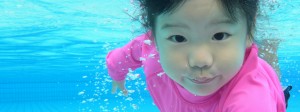Swimming has a myriad of benefits for all children, but learning to swim is particularly beneficial for children with special needs. Generally speaking, there are three major goals for a swim program designed for special needs children:
- Boosting physical activity levels
- Developing self-confidence
- Teaching a lifesaving skill
Teaching kids with special needs to swim is not only a good idea, but it’s also essential. Swimming lessons help kids with special needs in a number of key areas, including greater muscle strength and physical endurance, increased flexibility, more self-control, and, in many instances, improved behavioral outcomes.
Creating an effective swimming program for kids with special needs takes a patient understanding of each swimming student as well as a well-thought-out plan for how the lessons can be adapted to each child. Here are some tips on teaching swimming lessons to kids with special needs:
- Utilize appropriate adaptive equipment — Some students may benefit from adaptive equipment that makes the water experience more positive for them. Life jackets other flotation devices like floating mats may sometimes be used to help children with motor disorders enjoy swimming safely. For children with tubes in the ears, specialized swim plugs or caps will need to be used to prevent the water from doing damage.
- Limit distractions — Special needs children often do better in areas of the pool with no distractions. Try to limit harsh lighting or background noises.
- Be consistent — Since many special needs kids thrive with specific, predictable routines, it is essential that instructors be consistent in their teaching times and methods. Any necessary deviations from normal schedules should be planned in advance.
- Adapt to the needs of each child — Some children may benefit from visual cues (for instance, with flash cards or diagrams) as opposed to verbal instructions. Other children may learn better with physical demonstrations. It is important to adapt the lessons to match the ways in which each child learns best.
- Make it fun — Getting into the water for the first time can be a scary experience for many special needs children. Try to reduce water anxiety by making their experience fun and giving them plenty of praise and encouragement.
- Plan for safety — Make sure that safety is a top priority in your swimming program. Safety measures include having a small class size, clean water, good leadership, qualified swim instructors, and a documented emergency plan.
- Give each child individualized attention — Because swimming with being a new experience for most of these children, they may be hesitant or reluctant to “take the plunge” at first. Be patient, and work with kids at their own speed to get them adapted to being in the water and moving in the water. Additionally, children with epilepsy with need “spotters” at all times.
- Emphasize basic water skills — Before attempting to teach swimming via traditional strokes, it’s important to make sure that each child masters basic water skills like breathing, maneuvering underwater, and flotation. These skills will not come naturally for many children, which is why a patient, the consistent teaching method is
Swimming is an important skill that can save the lives of special needs children. Parents and educators can work with swimming instructors to create adapted swimming programs that fit the need of each child individually.
WhatsApp number: +971 565 830 067 (Just send us to code c143 and we will get back to you ASAP)
Contact Us: Click here to send us your details or fill in the form below.
You can get in touch with us 24/7 and one of our experts will not only give you a free consultation but also help you pick out an appropriate male or female personal trainer to meet your needs. One-on-one personal training lessons are available in Dubai, Abu Dhabi, Sharjah, Ajman, and RAK.
